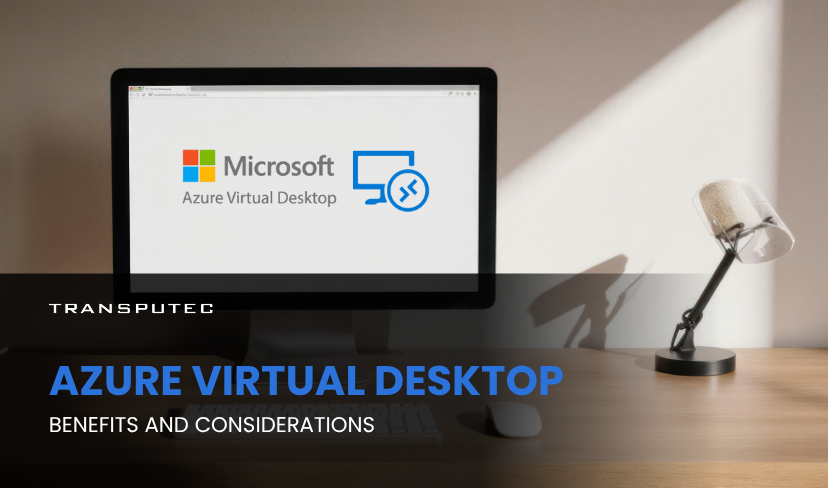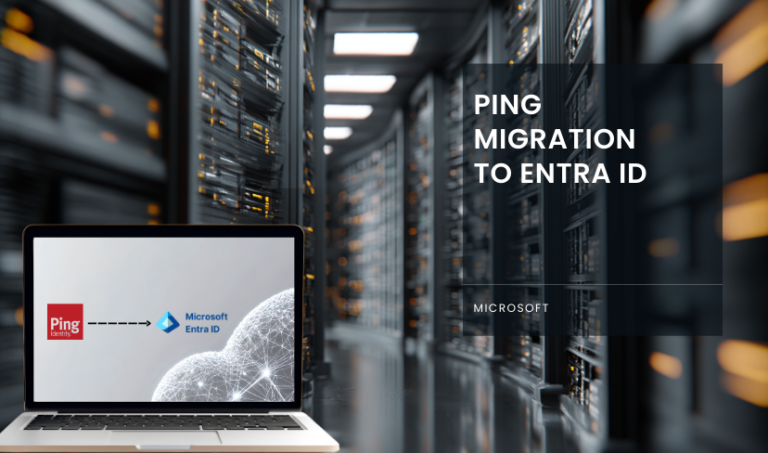Written by MSP SPECIALIST | TRANSPUTEC
The Modern Workplace Challenge
Imagine your team scattered across cities, struggling to access critical files, applications, or even their own desktops. Productivity drops, IT support is overwhelmed, and security risks multiply. This is the reality for many businesses today, especially those managing remote or hybrid workforces. The solution? Azure Virtual Desktop (AVD)—a cloud-powered platform that transforms how organisations deliver desktops and apps to employees, no matter where they are.
In this blog, we’ll explore the real-world benefits, key considerations, and practical insights for adopting Azure Virtual Desktop, backed by data and expert experience.
What Is Azure Virtual Desktop?
Azure Virtual Desktop is Microsoft’s cloud-based desktop and app virtualisation service, running on the Azure platform. It allows businesses to deliver full Windows desktops and individual applications to users from anywhere, using any device.
Unlike traditional on-premise solutions, Azure Virtual Desktop eliminates the need for complex gateway servers and provides scalable, secure, and cost-effective virtual desktop infrastructure.
Why Businesses Are Choosing Azure Virtual Desktop
1. Flexibility and Scalability
Azure Virtual Desktop enables organisations to scale up or down based on demand. Whether you need to onboard new employees, support seasonal workloads, or enable remote work, the platform adapts instantly. According to Forrester Research, companies using Azure Virtual Desktop Infrastructure (AVDI) saw a 300% ROI over three years, thanks to reduced IT management costs and improved resource allocation.
2. Enhanced Security
Security is a top concern for businesses, especially with remote work. AVD leverages Microsoft’s robust security features, including multi-factor authentication, encryption, and compliance certifications. This ensures that sensitive data remains protected, even when accessed from untrusted devices or networks.
3. Cost Efficiency
With Azure Virtual Desktop, you only pay for what you use. The platform’s multi-session capabilities allow multiple users to share a single virtual machine, reducing licensing and infrastructure costs. This is particularly beneficial for small and medium-sized businesses looking to access enterprise-grade solutions without significant upfront investment.
4. Seamless Integration with Microsoft 365
Azure Virtual Desktop is optimized for Microsoft 365, ensuring that users can access their favorite productivity tools—like Word, Excel, and Teams—without performance issues. This integration is crucial for maintaining productivity in a remote or hybrid work environment.
5. Simplified Management
Managing virtual desktops and applications is streamlined through the Azure portal. IT administrators can easily configure network settings, manage user access, deploy desktops, and enable applications—all from a single interface. This reduces the complexity and time required for IT management.
Ready to simplify your remote work setup?
Connect with us today for our free consultation!
Key Considerations When Implementing Azure Virtual Desktop
1. Network Performance
While AVD is designed for remote access, network performance can impact user experience. Businesses should ensure they have reliable internet connectivity and consider using Azure’s global network for optimal performance.
2. Licensing and Compliance
Azure Virtual Desktop requires specific licensing, which may be included in certain Microsoft 365 subscriptions. Organisations should review their licensing needs and ensure compliance with Microsoft’s terms.
3. User Training and Support
Adopting a new platform requires user training and ongoing support. Businesses should plan for onboarding sessions and provide resources to help employees adapt to the new environment.
4. Security and Data Protection
While AVD offers robust security features, organisations must implement additional measures such as endpoint protection and data loss prevention to safeguard sensitive information.
Real-World Benefits: Case Studies and Data
Forrester Research found that organisations using AVD Infrastructure experienced a 300% ROI over three years, with significant reductions in IT management costs.
Citrix reported that AVDI can improve employee productivity by up to 20%, thanks to seamless access to applications and desktops.
Azure Virtual Desktop’s multi-session capabilities allow businesses to reduce the number of virtual machines and operating system overhead, leading to cost savings and improved resource utilisation.
Conclusion
Azure Virtual Desktop is more than just a remote desktop solution—it’s a transformative platform that empowers businesses to adapt to the modern workplace. By delivering flexibility, security, and cost efficiency, AVD helps organisations overcome the challenges of remote work, streamline IT management, and boost productivity. Whether you’re a small business or a large enterprise, Azure Virtual Desktop offers a scalable and secure solution for your virtual desktop needs.
Ready to transform your workspace with Azure Virtual Desktop? Contact us to connect with an expert and get started with Transputec. Let us help you unlock the full potential of cloud-powered desktops and applications.

Ready to experience the Transputec difference?
Contact us today to schedule a consultation with our experts.
FAQs
What is Azure Virtual Desktop, and how does it benefit my business?
AVD is a cloud-based desktop and app virtualisation service that allows businesses to deliver Windows desktops and applications to users from anywhere, using any device. It offers flexibility, scalability, enhanced security, and cost efficiency, making it ideal for remote and hybrid work environments.
Is AVD suitable for small businesses?
Yes, AVD is suitable for businesses of all sizes. It offers scalability and flexibility, allowing small businesses to access enterprise-grade virtual desktop infrastructure without significant upfront investment.
How does Transputec support AVD implementation?
Transputec provides end-to-end support for AVD, from initial assessment and design to deployment, ongoing management, and user support. Our team of experienced Azure cloud architects and engineers ensures a smooth and successful implementation.
Is Azure Virtual Desktop secure?
Yes, AVD is built on Microsoft Azure, which offers robust security features, including encryption, multi-factor authentication, and compliance certifications. Organisations can leverage these features to protect their data and mitigate security threats.
What is the difference between Azure Virtual Desktop and traditional remote desktop solutions?
AVD is a cloud-based solution that eliminates the need for complex gateway servers and provides scalable, secure, and cost-effective virtual desktop infrastructure. Traditional remote desktop solutions often require on-premise hardware and are less flexible and scalable.




